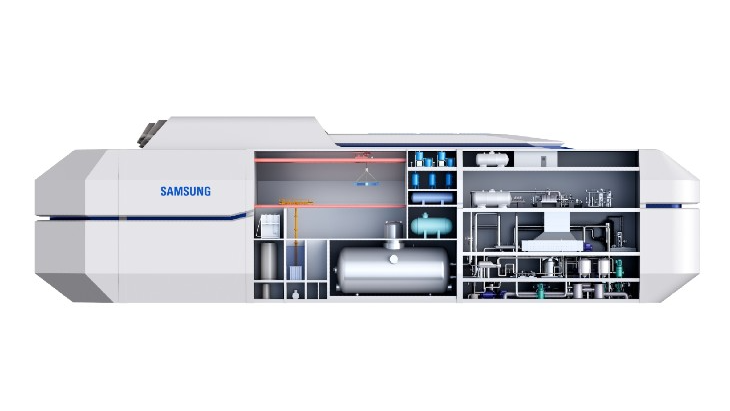The football-pitch-sized turbine hall has now been razed to the ground using a series of "innovative and forward-thinking techniques" which meant the completed work was achieved in a significantly quicker timeframe than if traditional decommissioning and dismantling approaches had been followed, the company said.
Up to 700 kgs of explosives were used last November to weaken the four reinforced concrete plinths on which two 65-tonne turbogenerators stood. This marked the largest use of explosives on a UK nuclear site and the longest programmed detonation sequence in Europe, according to Nuclear Restoration Services (NRS). Since then, high reach cranes and excavators have been used to remove rubble from the weakened turbine plinths and tear down the rest of the concrete structure until the hall was completely removed.
The use of explosives reduced the project schedule by four months, costs by GBP300,000 (USD405,472) and minimised vibrations to negligible levels compared with using traditional mechanical percussion removal techniques, it said. Around 40 tonnes of CO2 emissions were also saved by minimising machinery fuel use.
More than 17,000 tonnes of concrete and rubble have been removed from the turbine hall, fire station and electrical annexe structures. This waste has been crushed, processed and reused for ongoing construction projects. About 35 miles of cable have also been removed.
A scrap metal contract has raised more than GBP3 million income to date from the sale of the 11,000 tonnes removed during the de-plant and demolition phases. This revenue will be used to offset decommissioning costs.
"This is an incredible achievement for NRS, our contract partners Erith, the Office for Nuclear Regulation (ONR) and the Nuclear Decommissioning Authority (NDA)," said Sizewell A Site Director Alan Walker. "I would like to thank everyone including those involved and our neighbours for their continued support throughout, as well as the ONR for enabling us to push the boundaries of innovation in conventional demolition together. The learning from this will be applied to other NRS projects to continue delivering efficient, value for money decommissioning and restoration of nuclear sites."
NDA Programme Manager David Rushton added: "The successful demolition of the turbine hall brings skyline change to the Sizewell A site. The innovative use of explosives provides valuable learning for future decommissioning activities, and the segregation and reuse of demolition material supports the NDA's sustainability targets."
"From the start, once satisfied with the safety evidence provided for the turbine hall demolition, ONR's inspectors permissioned key stages of the project and adopted an enabling regulatory approach throughout the work," ONR said.
Andrew Bull, ONR's Nominated Site Inspector at Sizewell A, said: "We've worked very closely with NRS, adopting an enabling stance to allow the licensee to push forward with a modern, and at times, ground-breaking approach to accelerating this major dismantling project. ONR works hard to reduce unnecessary regulatory burden and add value when it is safe to do so. This has been no better demonstrated than for the removal of the Sizewell A turbine hall, where we have played a key role in this example of decommissioning the UK's nuclear estate."
Sizewell A's two 210 MWe Magnox gas-cooled reactors operated from 1966 until 2006. Defuelling began in 2009, with fuel removed from the reactors placed in the site's used fuel storage ponds before being packaged in transport containers for shipment to the Sellafield complex for reprocessing. The final flask of fuel was shipped to Sellafield in August 2014. Sizewell A was declared completely fuel-free in February 2015. The decommissioning milestone marked the removal of 99% of the radioactive hazard from the former Magnox nuclear power station. Planning consent was given to demolish the turbine hall and electrical annexe in August last year.
The empty land that now lies where the flattened turbine hall once stood will eventually be restored and released for re-use. The whole site Sizewell A site is expected to be completely cleared by 2077.

_74189.jpg)




_18570.jpg)
_16159.jpg)
_49205.jpg)





